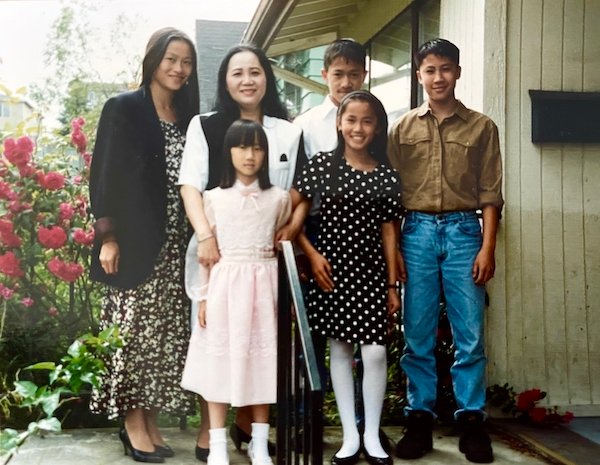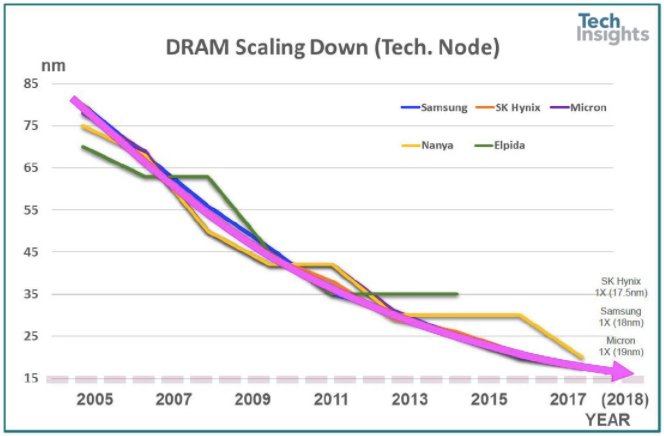Wrapping up Woman's History Month, we've decided to cover a more recent woman making waves in electrical engineering history.
Recently, All About Circuits had the pleasure to sit down and talk with Thy Tran, Micron’s VP of DRAM Process Integration. Having been involved in the memory industry since the 90s, Thy has established herself as, not only a memory expert, but also as an advocate for the arts, a mentor, a team player, and a bit of a “semiconductor gypsy.”

Thy Tran, Micron's VP of DRAM Process Integration. Image used courtesy of Thy Tran
In this article, let’s unpack our interview and learn how Thy found her place in the EE world, how she approaches working within a multicultural team, and her history with Micron and memory.
Finding Your Place in the EE World
Everyone has a different reason for getting involved within the EE world. Whether you were interested in how things work and took things apart growing up (sorry mom, I took the radio apart again!), or you were drawn to the idea of career stability, or maybe you just really liked math, there's a reason you became an electrical engineer.
For Thy, as a refugee, she was looking for a way to get a scholarship to further her education. Her first love was art, but that was going to be a difficult career path to take. So, after a counselor's recommendation and her skills in math and the sciences, she lept into the field of electrical engineering because it felt like “a natural step to take.”

Thy (left) and family on her graduation day. Image used courtesy of Thy Tran
Despite her skills, like many, there were some struggles early on. Some studies estimate that 40-50% of students drop out or change majors from electrical engineering.

Thy Tran (second on the right) and her Kappa Delta Sorority Sisters. Image used courtesy of Thy Tran
Getting an education in electrical engineering is not an easy task. Rewarding? Yes. Easy? No. The biggest struggle she seemed to face was herself, namely the doubt of whether this was the right career choice.
“Am I compromising my dream to go into something more practical?”
After reflection and a backpacking trip across Europe, she finally found her "why."
"So I came back with an understanding of the why. Why am I doing things? Then I had a different perspective, and I really started learning for the sake of learning. I've got this free ride. I should be thankful and grateful. I basically started to enjoy the process of learning, and that made all the difference. It made things easier. And that's how I started liking engineering."
With some perspective and fuel for her EE education, Thy was able to finish her education, begin a successful career, and integrate her passion for the arts into her daily life.
"Having a diverse perspective from the artistic view can also help you in engineering. But if you look at the world that we can create—the circuit level computer chips—that in itself is a work of art. To do it with such precision, virtually defect-free, the intricate circuit layout, and all the layers that you keep either adding or subtracting from, it's beautiful."
It's not very often that you're able to find the best of both worlds: to combine what you're passionate about with your career. It let Thy combine her artistic abilities and interests into the world of electronic hardware design.
Leading With Empathy
Along Thy's EE journey, she's worked within many different cultures, both corporate and interpersonal. Having worked in various locations in Europe and Asia, she's come to learn that the different experiences you attain from working with a multicultural team can be beneficial in seeing new perspectives that may lead to a better solution.
Though there are usually many benefits to working within a diverse team with so many unique ways of seeing and approaching challenges, there can also be drama.
"There's political drama, there's tribal drama. You have semiconductor companies that can also have a subset where team members come from different companies that have different cultures, and they can clash."
As many engineers can probably vouch for, the world of electrical engineering can get intense at times. There can be moments where the project can be all-consuming, to where work-life balance is almost nonexistent. As Thy puts it, you become "in the zone, and a lot of times it's obsessive-compulsive, and you have to love [what you're doing] to really last this long."
Since Micron is a global company in ~17 different countries, Thy has really put her interpersonal skills to the test, especially as a team leader.
As the leader of the DRAM Development Team, Thy oversees three teams in three different countries: US, Taiwan, and Japan. Though working across three very different teams could come as a challenge, Thy's prior experiences helped smooth the way. Her first international experience was when she joined Siemens' DRAM Development Alliance. There she worked with IBM, Toshiba, and Siemens, which exposed her to Japanese and German cultures. Of course, the road was rocky at times, and mistakes were made, but she learned a valuable life lesson.
"I learned to lead with empathy, to understand people have different perspectives and different behaviors, and how my behaviors can affect the perception in another culture."
Having this approach has allowed Thy to prevent tunnel vision. The many different perspectives allow the teams to see the different angles of each potential challenge, and to get better results. Leading with empathy has helped solidify not only her place within Micron but within her individual teams.
Traveling Down Memory Lane: SRAM to 1α DRAM
Though Thy has developed a rich background embedded within the memory industry, having worked with logic and SRAM, her primary focus has been on DRAM.
At Micron, Thy's team "is responsible for enabling the next future DRAM technology nodes." Basically, she describes it as "scaling or shrinking the technology or the die, providing the process technology to enable that path to lower cost and also increase the memory bits or memory density."

Graph showing the scaling of DRAM nodes. Image used courtesy of Tech Insights
When asked about some of the challenges her team is currently facing, Thy mentions the "limitations in terms of the thermal budget" and how it's basically an "integration challenge."
As she and her team look for new solutions, newer technological innovations (nanosheets, transistor types, etc.,) are always "on the table."
"So that's the art of DRAM development—something as simple as a transistor and a capacitor. It's incredible how complex the technology needs to be to continue with the scaling and deliver the power and performance that the customers want."
Adding to this, she talks about how "the access device and the transistor in the memory array have different refresh requirements." From there you'll have to "integrate the process steps and the thermal budgets and the device engineering to enable both the array and periphery area." It all must work together.
"To find the process design points and the integration flow that optimizes both the array and the rest of the die is the Holy Grail of DRAM engineering."
With these challenges in mind and the openness to investigating newer technologies, Thy and her team shook the DRAM world last year with the 1α DRAM, which she claims is one of her proudest achievements.
"I think, as an engineer, you deliver results, but as a leader and a technical leader, if you're able to drive a global team to deliver results, unheard of results, that puts us into technology leadership with our 1α DRAM."
Using Your "Why" to Push for the Future
This year, we've been lucky to end our Women's History Month with an insightful, and delightful, interview with Thy Tran. To bookend this conversation, everything comes back to the "why."
"You should think about your why, your purpose, why you're doing it. And, as long as you find a reason or you're empowered by that, you can do pretty much anything. I've seen great female leaders at Micron who also helped to advocate for others. So you start finding the why for yourself. And along the way, you find how you fit in this world and how you can help others, how you can help impact change in a positive way."
As long as you're motivated and love what you do, the sky is the limit.
Featured image used courtesy of Micron [video]
Interested in other EE achievements by women? Read on in the articles down below.
Kicking Off Women’s History Month with the “Queen of Carbon Science”
Women in Warfare: Female Engineers Make Their Mark on Defense Technologies
How Actress Hedy Lamarr, the “Mother of Wi-Fi,” Laid the Foundation for Modern RF Tech
